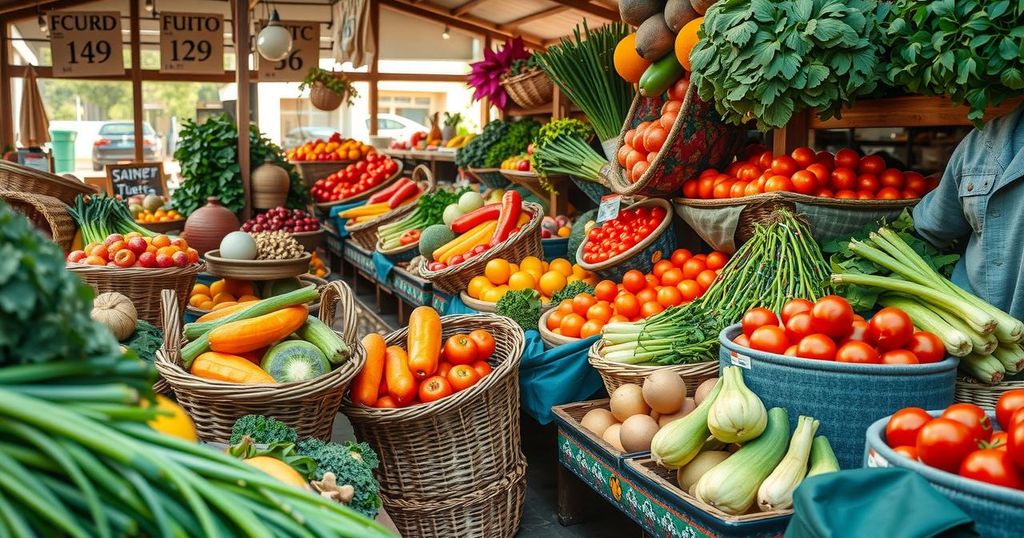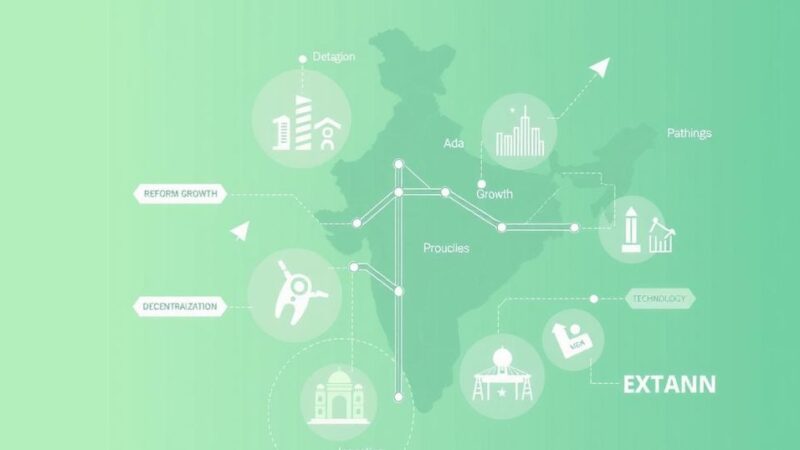Nigeria’s food inflation decreased to 23.51% in February 2025 from 37.92% in February 2024, indicating lower price increase rates. Monthly food inflation was recorded at 1.67%. While certain staple food prices improved, the regional inflation rates showed significant variability, requiring ongoing attention to supply chain issues and local production conditions.
In February 2025, Nigeria’s food inflation rate dropped to 23.51%, a significant decrease from 37.92% recorded in February 2024, as per the Consumer Price Index (CPI) report from the National Bureau of Statistics (NBS). Although food prices continue to rise, the rate of these increases has moderated. The decline in food inflation is partly attributed to a change in the base year used for measurement, providing a clearer perspective on price changes.
On a month-on-month basis, food inflation for February stood at 1.67%, indicating a slower pace of price increases compared to January 2025. This trend suggests that while food prices are still on the rise, the rate of increase has significantly reduced, signaling potential improvements in supply conditions and reduced impacts from exchange rate fluctuations.
Several key staples, including yam tubers, potatoes, soybeans, maize flour, cassava, and dried bambara beans saw reduced price growth in February. This trend indicates an improved supply chain or less inflationary pressure, which had previously affected food prices negatively. The report highlighted that the average annual food inflation rate for the twelve months ending February 2025 was 34.74%, higher than the previous year’s rate of 30.07%.
Despite the easing food inflation, food prices still significantly drive overall inflation in Nigeria, contributing 9.28% to the total headline inflation rate. Month-on-month, food inflation accounted for 0.82%, demonstrating that while the rate of inflation has slowed, food prices continue to rise.
Regionally, food inflation rates varied significantly, with Sokoto experiencing the highest at 38.34%, followed by Edo at 35.08%, and Nasarawa at 33.53%. These elevated rates are likely due to supply chain disruptions and increased transportation costs. Conversely, states such as Adamawa at 12.18%, Ondo at 13.66%, and Oyo at 15.55% reported lower food inflation rates, suggesting better local production and reduced dependence on food imports.
In terms of month-on-month changes, Sokoto recorded the highest inflation increase at 18.83%, with Nasarawa and Kogi following. In contrast, states like Ondo, Kaduna, and Oyo experienced month-on-month declines in food prices, indicating localized improvements in supply or effective policy interventions to stabilize prices.
The decline in Nigeria’s food inflation rate to 23.51% in February 2025 marks a significant improvement compared to the previous year. While the moderate rise in prices suggests a potential stabilization in food costs, regional disparities illustrate varying impacts across states. Continuous monitoring of supply chains and inflationary pressures is critical in managing overall inflation in the country.
Original Source: nairametrics.com






